In the Studio: Big Chief Tyrone “Pie” Stevenson
“When I sew, I'm sewing with all my ancestors, all the people that taught me thi...

Gamaliel Rodríguez is an artist based in Cabo Rojo, Puerto Rico, and a 2024 Joan Mitchell Fellow. We interviewed Rodríguez about his work and creative practice in February 2025. The following is excerpted and edited from a transcript of that conversation.
I make paintings and drawings. My work makes reference to the infrastructural failures that make living and working in Puerto Rico difficult, while challenging pictorial conventions that depict the tropics as a paradise.
Puerto Rico is a very interesting place to be an artist. It's very rare in Puerto Rico to have a painter in your family. It's like you're a ballet dancer, or something really unusual, and they look at you like, "Oh my God, you want to be a painter?" The reality is that I am the first one in my family to be a painter.
Artists in Puerto Rico are also very different and versatile because we don't have a specific school, like Cuba, for example. We tend to study in different places—New York, England, Chicago, LA, Mexico, Spain, Berlin—and then come back with different sources of technology or mediums or information.
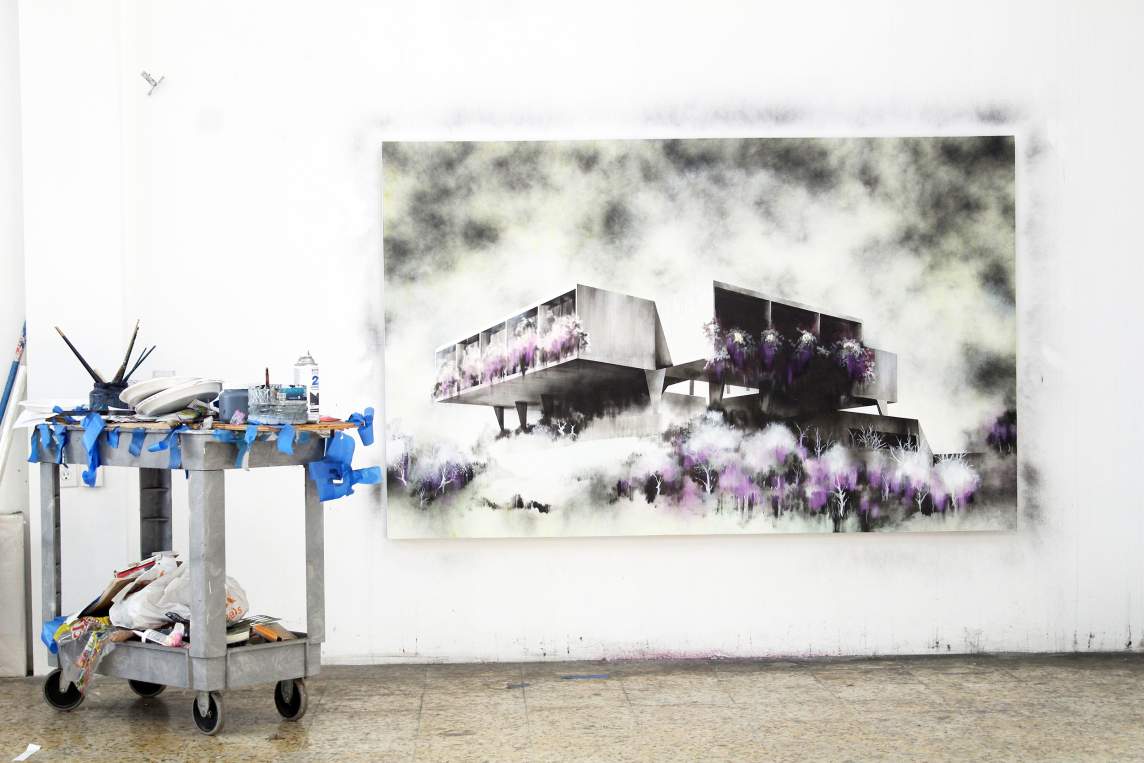
I studied first in Puerto Rico, and received my BFA in Communications with a sub-concentration in arts. And then I moved to England and I did my MFA there. My mind exploded over there, because the British are very into painting, into art. I started to work first with painting and then drawing. People have tended to be more fascinated with my drawings, and I’m perhaps more known for them, but I have been transitioning again to painting, incorporating the ideas that I have previously from drawing, and so far that has been a success.
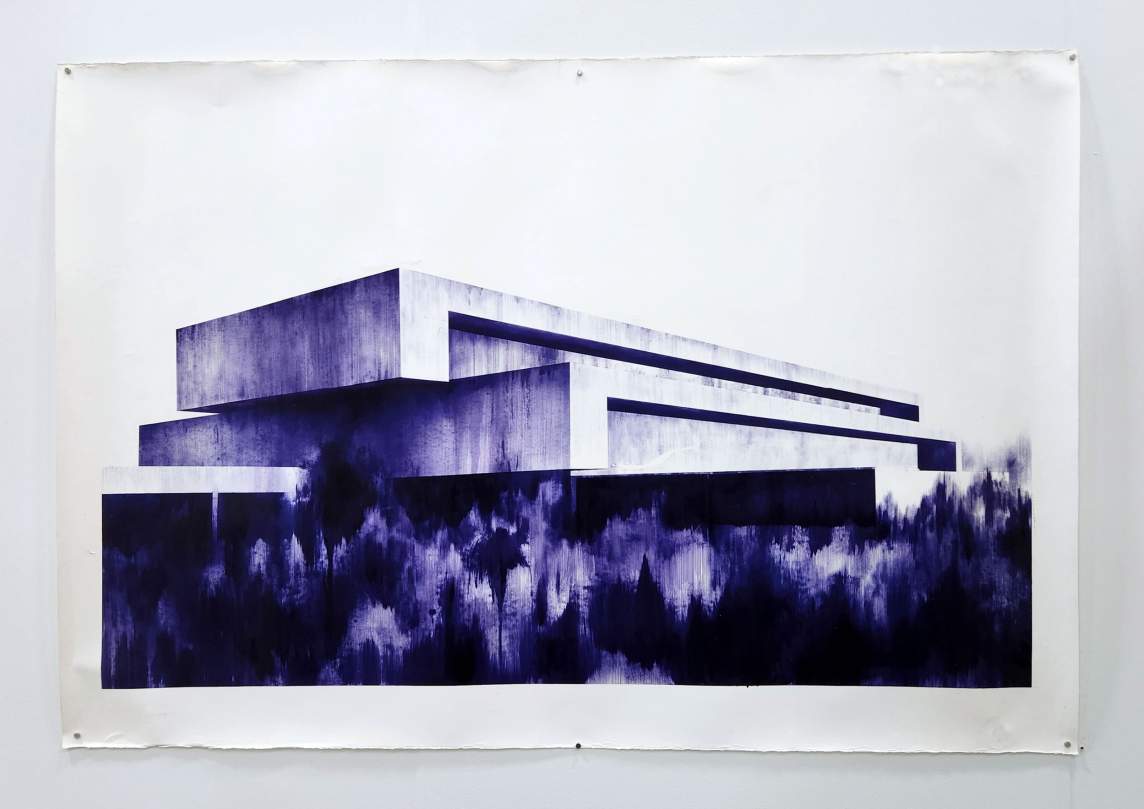
When I start a work, I look for an idea. And then from that idea, I try to select an image that relates to the idea. In the beginning, I was working with stuff that I found on the internet and I created imaginary places, based on photographs. I was making these huge drawings, with ballpoint pen—landscapes that look like they were taken from a drone photo, but I never had a drone. It's more imaginary. And it was fun, when I was doing these drawings of the landscape or industrial buildings that were fake, and I would put in false information on the bottom and people would believe that the place was real. And that was fascinating, thinking about texts like Roland Barthes, how images affect people's perception.
In 2015, I stopped doing that. I was more concentrated on images that I can find myself and felt more related to. At that time, I was doing a lot of residencies and that's helped me a lot to mature as an artist. You have more input from people from different backgrounds. And then I decided, you know what? I want to pay homage to the place that I'm living in right now. And that brought me back here, to Puerto Rico.
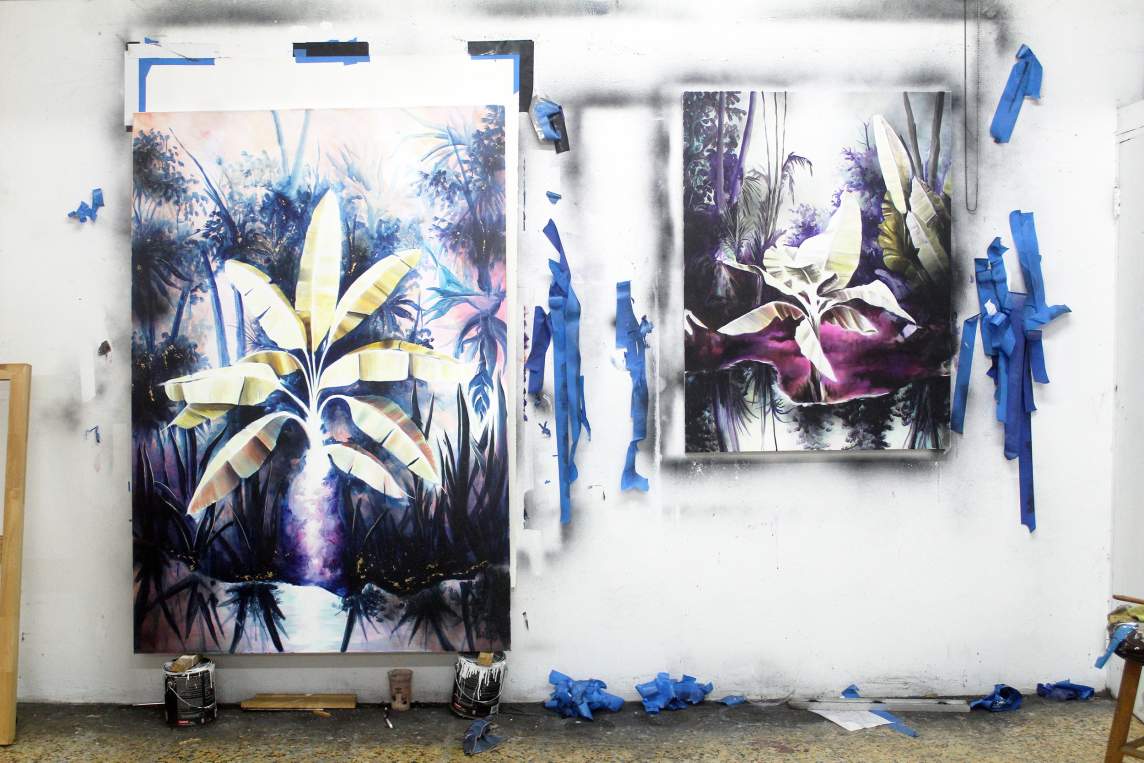
I don't live in the capital city, I live two and a half hours from there, in Cabo Rojo. It's very rare to see a painter here. It's like finding a unicorn, because in this area, either you're retired and that's why you live here or you're a fisherman or you are a labor worker. I see it as a privilege to live in a place that is not as expensive as a capital city, where I can sustain myself doing art. And that's why I live here.
My studio here in Cabo Rojo is also where I live. It was a former grocery store and I converted it into my studio/house. I can fully concentrate here, like a monk basically. Sometimes it's really good to live in the place where you work, because you can change stuff really quickly. But the problem, when you live next to your studio, is that you wake up at 2:00 AM to go to the bathroom, you turn on the lights, start to look at the work and then take a picture in your cell phone and then you go to your bed and start to look at it, and think, "Oh, I have to do this." It’s like an addiction, and you change the rhythm of your sleep.
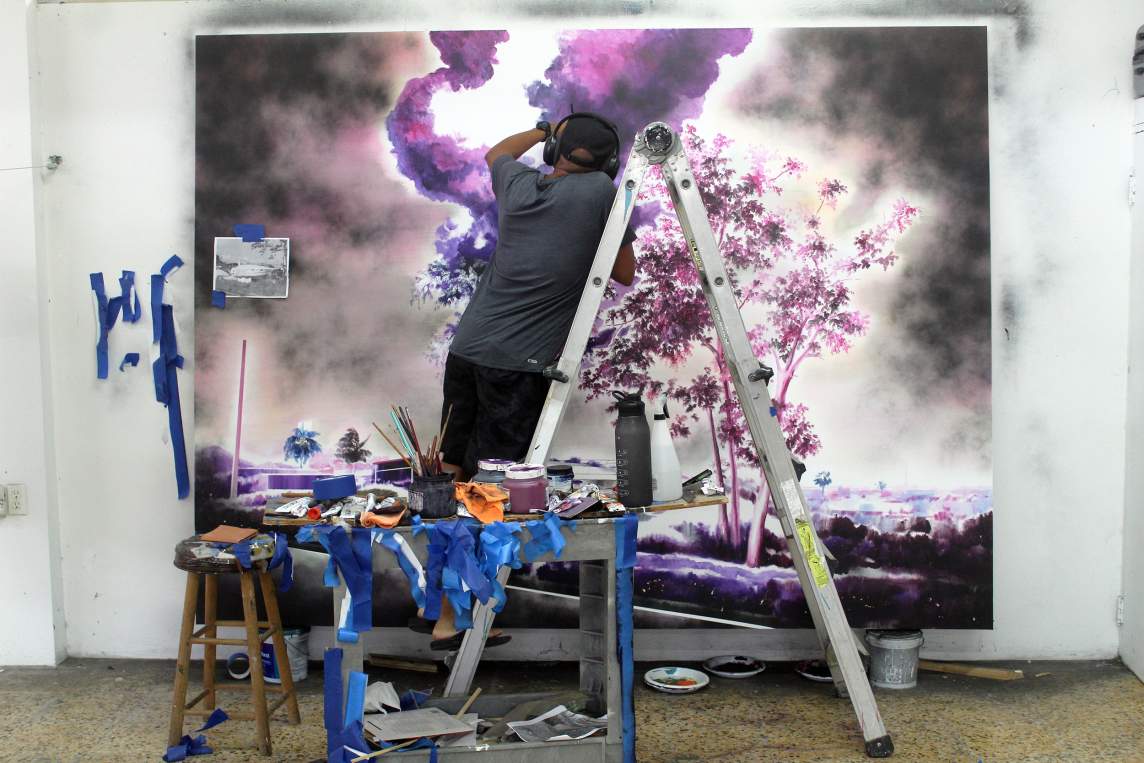
But I love it, the challenge, the struggle, as I’m working through a drawing or painting. I like to work by myself. Even though my work takes so long to make, I don’t want people in my studio helping me work, because it feels so intimate. I don't want to grow. I don't want a system. I need my isolation, to be able to work whenever I want to. And I don’t want my human touch to disappear.
I've been using this area as my inspiration because I run every day so I see things, and I’ll come back and take a picture at the same time of the day because I loved the light that I saw. Then I implement that in my work. In that way, my work has become more intimate to me, less broadly political, and more introspective.
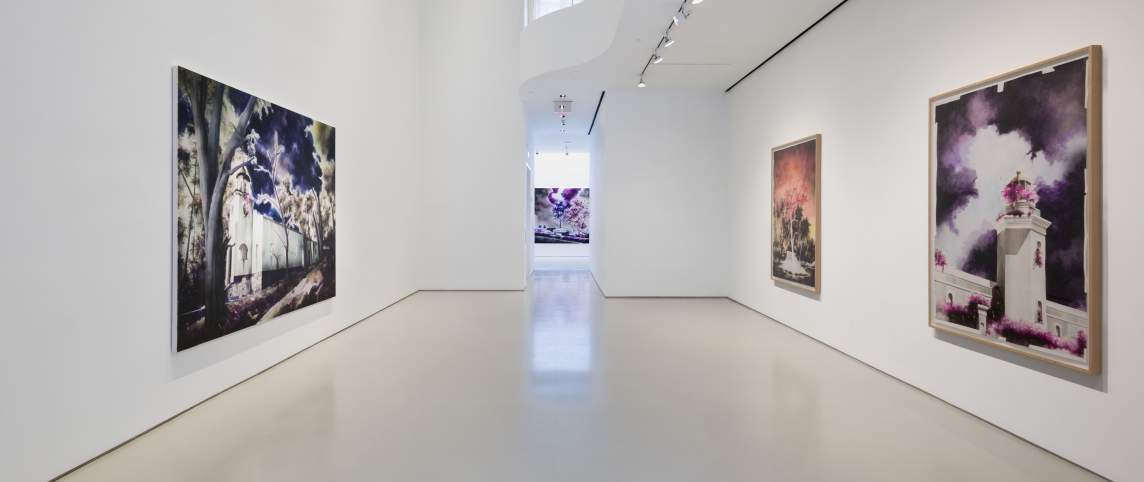
The pieces I’m working on right now are for a show at Sperone Westwater in New York, which will be on view March 20 - April 26. What a dream to work with that gallery. I'm surrounded by great artists, and they give me so much freedom. The title of the show is La Luz de Alante, which means “The Light Ahead.” I'm working with this idea of light, in nature—very glowing, almost like a luminescence. There’s a line of continuity with my previous work, relating to the decay of the economy here in Puerto Rico. The nature is more important in these works than the actual structures, which look more abandoned.
Some of this work is more colorful than my previous work, more like magical surrealism. All these images come out of photographs that I take with my own camera.
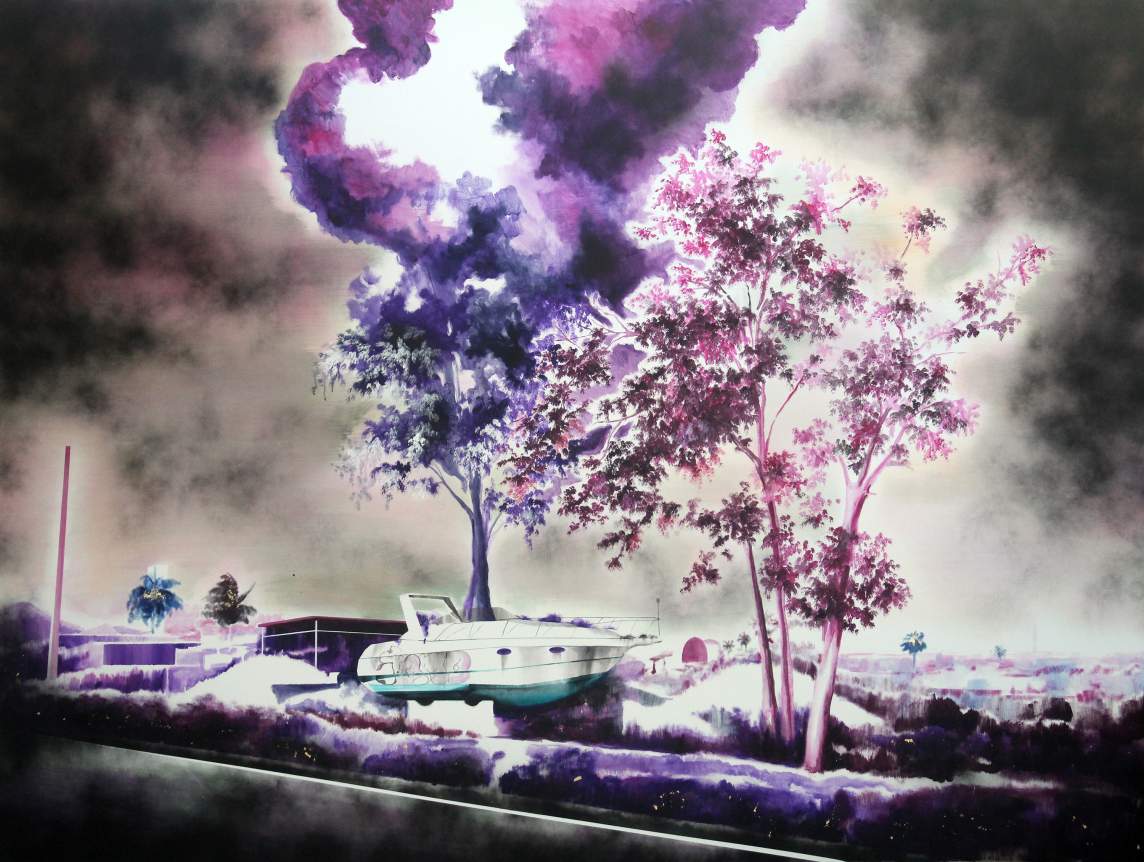
For example, one of the pieces in the show at Sperone Westwater is titled El camino de Combate, which is a road that goes directly to Combate—a beautiful beach in this area. I go there every day to run, so I pass by this boat. And the idea of that piece is basically, you see the trees glowing at the same time, smoky like a fire, but it's not a fire. It's more like a torch or lantern. And this kind of boat, from the 1980s, is reminiscent of the economy that we used to have, when there was a middle class in Puerto Rico that could have boats to go and have a great weekend.
The economy is getting worse and worse here, so that luxury is only for few, to have a boat now. And I never had a boat, but every time that I see this, it's related to me. It reminds me of the glorious time, the '80s and '90s when we had a great economy. When I pass by and see this object that was a symbol of something great—because that boat was expensive back then—to see it there, through the passing of time... It's a symbol, for me, of the decline in the economy.
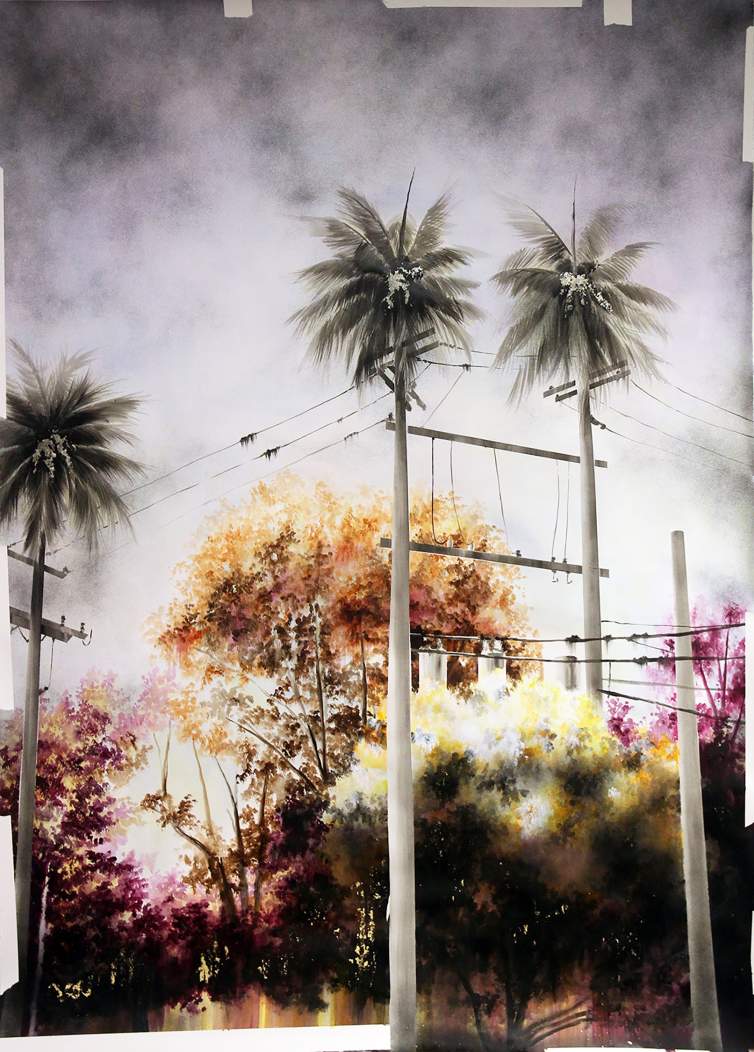
One of my recent works, The Tropicalized Notion of Power, is basically a dark joke about the current situation with the power grid system on the island, which is getting so old that we have blackouts continuously. The 31st of December, near New Year’s Eve, we had a blackout. So we have to make a power plan to celebrate the new year. So this piece is a joke, like, one day they're going to start to use palm trees instead of poles to put in the grid system because we're getting so bad in this situation.
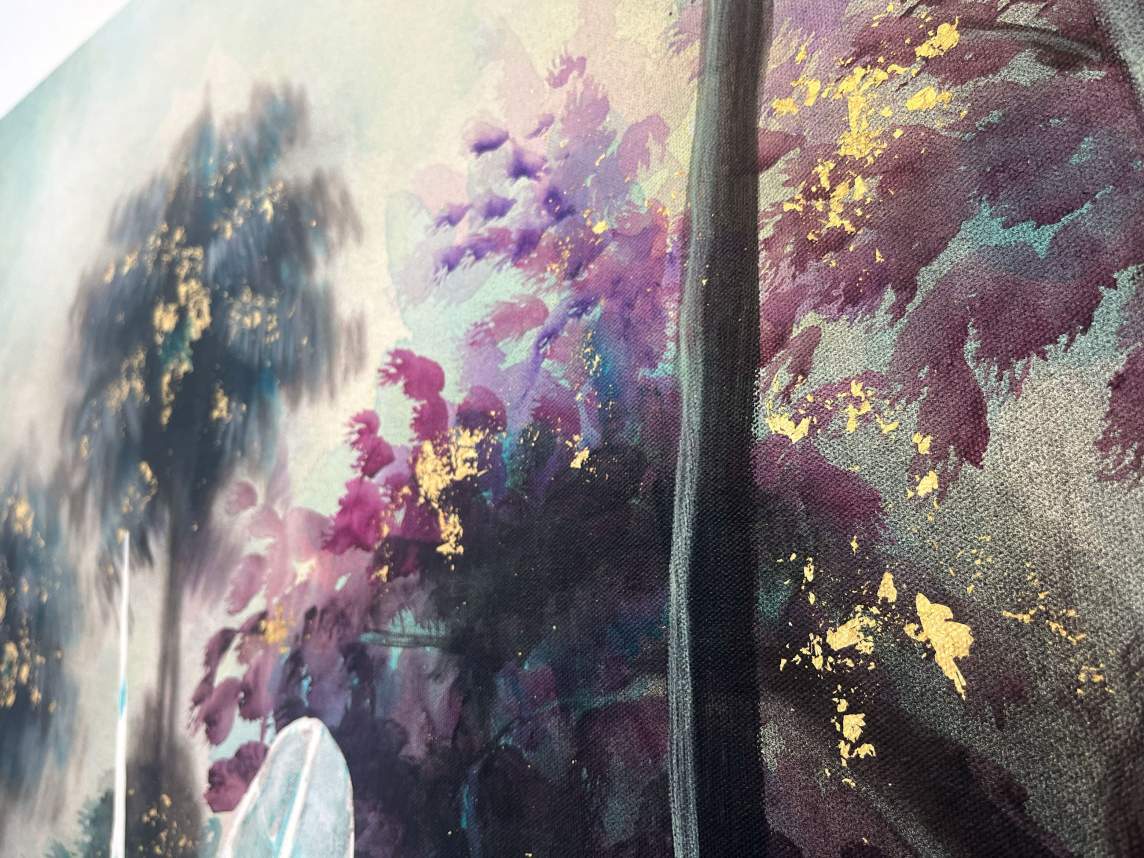
I use gold leaf in some of this work, and I see it as a religious thing. I saw a beautiful Bible in the British Museum with gold leaf decorating everything, so this idea of gold is almost like worship. It is the most precious metal that can be used for the expression of God or faith, and that's why I incorporate it in my practice, too. The way that it reflects light is very interesting, too—it changes everyday, depending on the light that you have. No other color does that. So that's why I've been using it. I don't use it in a very meticulous way. I like to look more raw, just giving a hint. It’s like something sublime, from the sky.
I’m always interested in the notion of power. I was in the military, so I have this background about what power is... And it can be represented in many ways. Religion is one of them. Politics is another one. And the power of nature, like hurricanes, storms, earthquakes. How powerful is faith? I believe in God, some people believe in Allah, some people believe in Amun. Everyone is free to believe in something. But this idea of believing in something and that being interconnected with some materials that represent it—that is powerful. It's beautiful.
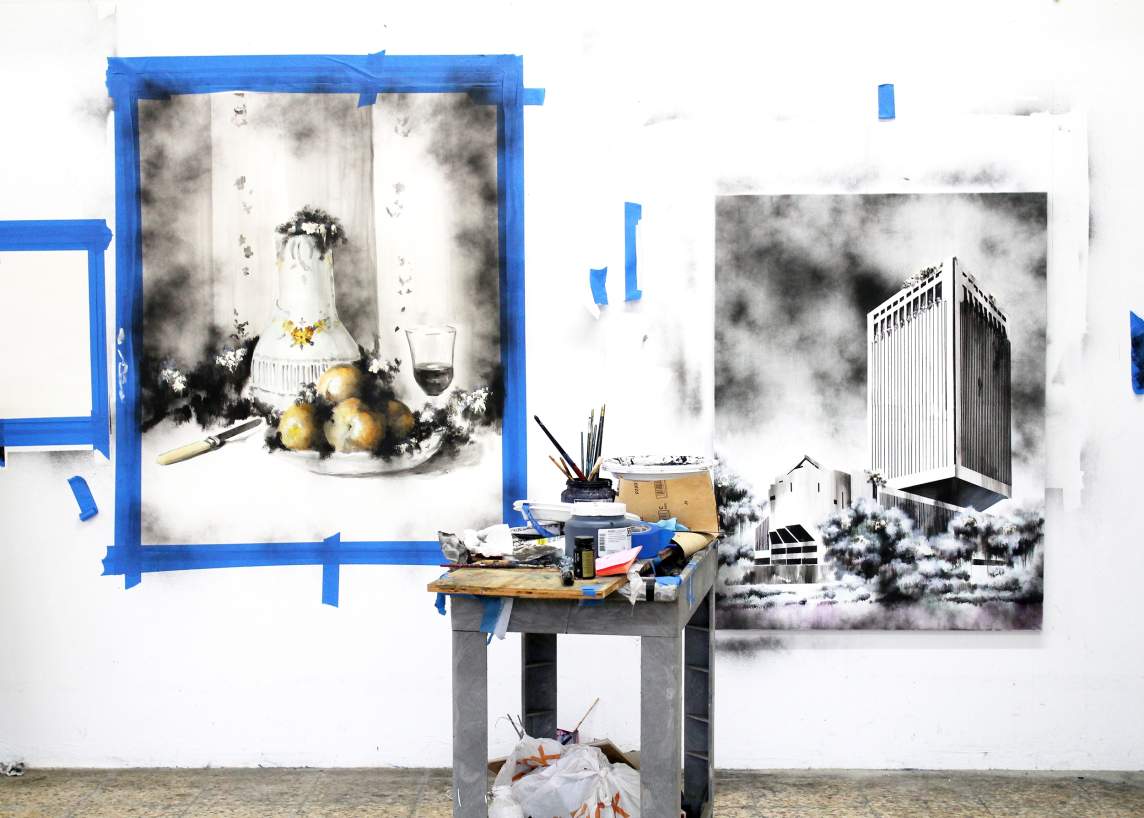
It’s a very busy time for me. Along with the solo show coming up, I have three more institutional shows this year, too. As soon as I got the Joan Mitchell Fellowship, I’ve been on a rollercoaster, with a lot of exhibitions, and things happening. I do feel blessed. Everything is starting to get better. I think it took me 24 years to actually start to get a little bit of recognition, but it is finally paying off. And I love it. That's why I try to take care of myself, because it's going to be a long career and I hope that I can enjoy every second of it, to make the work and meet people, show people that this is about love. There’s just something about doing art that I am really fascinated with—that challenge, that struggle every time you start with a new piece of paper, a new piece of canvas.
I always have the challenge to do better, because I’m never satisfied with what I've done. I want to be 10% better each year, a better artist every year. I don't want to be attached to one particular kind of work and then not do anything else. I like to explore, and that's the freedom that I have. That's the beauty. It's the same as musicians. Musicians never stop. Musicians never retire. And the great thing about art is that we are never going to retire, no matter what. Because even as you get older, you get better.
Interview and editing by Jenny Gill. Learn more about Gamaliel Rodríguez’s work on Instagram.